3D Printed Fused Deposition Modeling (FDM) Capillaries for Chemiresistive Gas Sensors
Abstract
1. Introduction
1.1. Scientific Hypotheses
1.2. The Target
2. Materials and Methods
2.1. D printed Capillary
2.1.1. Model Creation
2.1.2. Capillary Realization
- Measuring chamber without capillary (hereafter denoted 0L);
- Single-tier capillary (hereafter denoted 1L);
- Two-tier capillary (hereafter referred to as 2L);
- Three-tier capillary (hereafter denoted 3L).
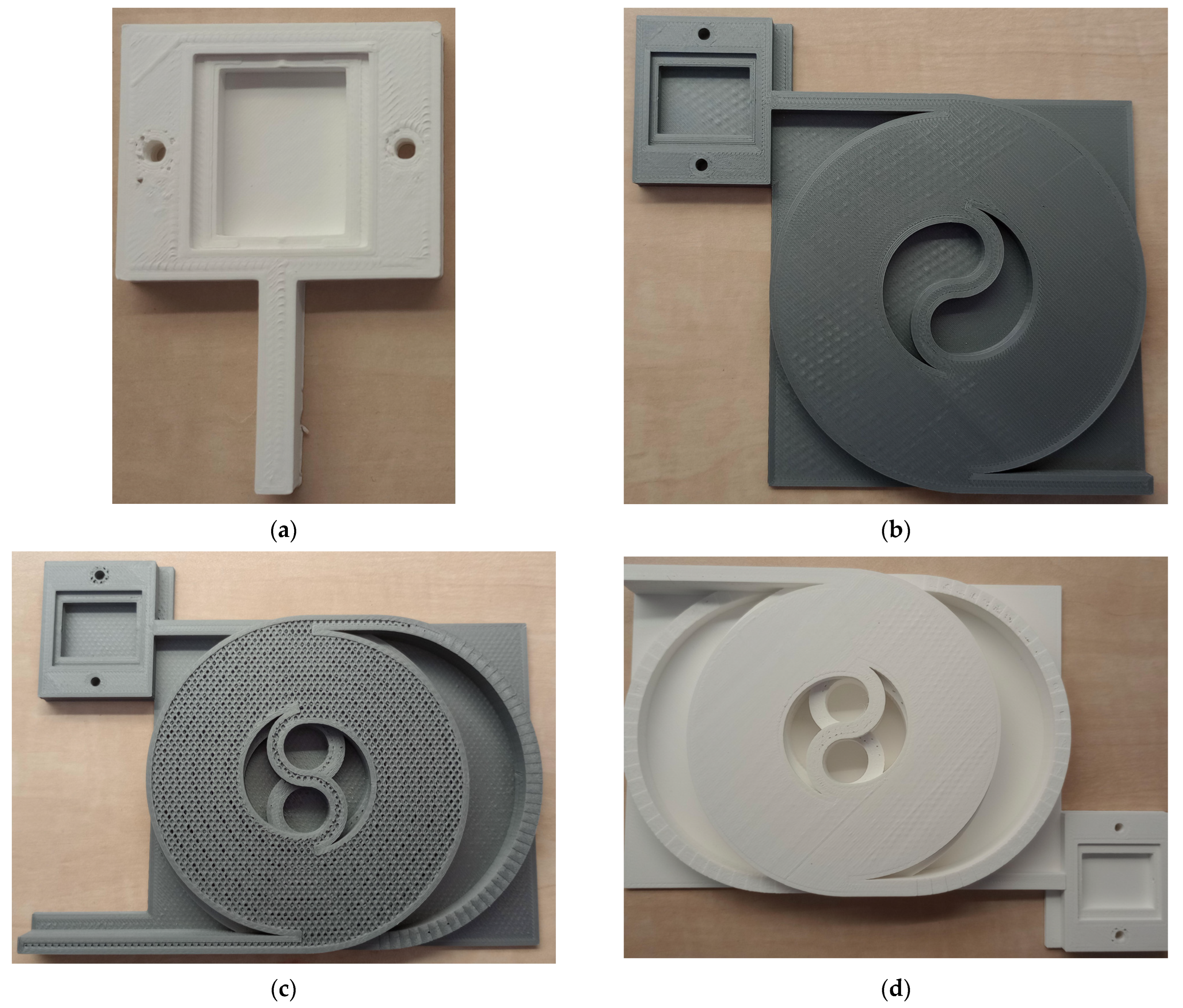
2.2. Detection
- Reduction (RED sensor, further referred to as CO sensor)—reacts mainly to carbon monoxide CO, but also to ethanol, hydrogen, ammonia, propane, methane, iso-butane or H2S,
- Oxidation (OX sensor, further referred as NO2 sensor)—provides signal mainly in the presence of nitrogen dioxide as well as NO or hydrogen gas,
- NH3 (NH3 sensor)—reacts mainly to ammonia NH3, but also to ethanol, hydrogen, propane or iso-butane.
2.3. Samples
3. Results and Discussion
3.1. Capillary Parameters Influence
3.2. Capillary Applications in the Food Industry
4. Conclusions
Author Contributions
Funding
Institutional Review Board Statement
Informed Consent Statement
Data Availability Statement
Acknowledgments
Conflicts of Interest
References
- SGX Sensortech. MiCS-6814, 1143 rev 8. Data Sheet. Available online: https://www.sgxsensortech.com/content/uploads/2015/02/1143_Datasheet-MiCS-6814-rev-8.pdf (accessed on 6 July 2023).
- Khatri, D.; Gladstone, K.; Joysar, Y.; Gupta, P.; Mehendale, N. Design and Development of an Alcohol Detector Employing a MQ-3 Gas Sensor and an 8051 Micro-Controller. SSRN. 2023. Available online: https://papers.ssrn.com/sol3/papers.cfm?abstract_id=4043898 (accessed on 27 July 2023). [CrossRef]
- Hanwei Electronics CO. Technical Data MQ-3 Gas Sensor. Data Sheet. Available online: https://www.sparkfun.com/datasheets/Sensors/MQ-3.pdf (accessed on 27 July 2023).
- Preedy, V.; Rodríguez Méndez, M.L. Electronic Noses and Tongues in Food Science, 1st ed.; Academic Press: Tokyo, Japan, 2016. [Google Scholar]
- Nesterenko, P.N. 3D printing in analytical chemistry: Current state and future. Pure Appl. Chem. 2020, 92, 1341–1355. [Google Scholar] [CrossRef]
- Valino, A.D.; Dizon, J.R.C.; Espera, A.H.; Chen, Q.; Messman, J.M.; Advincula, R.C. Advances in 3D printing of thermoplastic polymer composites and nanocomposites. Prog. Polym. Sci. 2019, 98, 101162. [Google Scholar] [CrossRef]
- Choinska, M.; Hrdlička, V.; Dejmkova, H.; Fischer, J.A.; Míka, L.; Vaněčková, E.; Kolivoška, V.; Navrátil, T. Applicability of Selected 3D Printing Materials in Electrochemistry. Biosensors 2022, 12, 308. [Google Scholar] [CrossRef]
- Ambrosi, A.; Bonanni, A. How 3D printing can boost advances in analytical and bioanalytical chemistry. Mikrochim. Acta 2021, 188, 265. [Google Scholar] [CrossRef]
- Gupta, V.; Beirne, S.; Nesterenko, P.N.; Paull, B. Investigating the Effect of Column Geometry on Separation Efficiency using 3D Printed Liquid Chromatographic Columns Containing Polymer Monolithic Phases. Anal. Chem. 2018, 90, 1186–1194. [Google Scholar] [CrossRef]
- Salmean, C.; Dimartino, S. 3D-Printed Stationary Phases with Ordered Morphology: State of the Art and Future Development in Liquid Chromatography. Chromatographia 2019, 82, 443–463. [Google Scholar] [CrossRef]
- Phyo, S.; Choi, S.H.; Jang, J.; Choi, S.; Lee, J.W. A 3D-printed metal column for micro gas chromatography. Lab Chip 2020, 20, 3435–3444. [Google Scholar] [CrossRef]
- Lucklum, F.; Janssen, S.; Lang, W.; Vellekoop, M.J. Miniature 3D Gas Chromatography Columns with Integrated Fluidic Connectors Using High-resolution Stereolithography Fabrication. Procedia Eng. 2015, 120, 703–706. [Google Scholar] [CrossRef]
- Chua, C.K.; Yeong, W.Y.; An, J. Special Issue: 3D Printing for Biomedical Engineering. Materials 2017, 10, 243. [Google Scholar] [CrossRef]
- Kodama, M.; Ishigaki, R.; Basher, S.; Sasaki, H.; Saito, A.; Makino, M.; Khosla, A.; Kawakami, M.; Furukawa, H. 3D printing of foods. Proc. SPIE 2018, 10597, 1059718. [Google Scholar]
- Izdebska, J.; Zolek-Tryznowska, Z. 3D food printing—Facts and future. Agro Food Ind. Hi Tech 2016, 27, 33–37. [Google Scholar]
- Palenzuela, C.L.M.; Pumera, M. (Bio)Analytical chemistry enabled by 3D printing: Sensors and biosensors. Trends Analyt. Chem. 2018, 103, 110–118. [Google Scholar] [CrossRef]
- Xu, Y.Y.; Wu, X.Y.; Guo, X.; Kong, B.; Zhang, M.; Qian, X.; Mi, S.L.; Sun, W. The Boom in 3D-Printed Sensor Technology. Sensors 2017, 17, 1166. [Google Scholar] [CrossRef]
- Simonenko, N.P.; Fisenko, N.A.; Fedorov, F.S.; Simonenko, T.L.; Mokrushin, A.S.; Simonenko, E.P.; Korotcenkov, G.; Sysoev, V.V.; Sevastyanov, V.G.; Kuznetsov, N.T. Printing Technologies as an Emerging Approach in Gas Sensors: Survey of Literature. Sensors 2022, 22, 3473. [Google Scholar] [CrossRef]
- Sandron, S.; Heery, B.; Gupta, V.; Collins, D.; Nesterenko, E.P.; Nesterenko, P.N.; Talebi, M.; Beirne, S.; Thompson, F.; Wallace, G.G.; et al. 3D printed metal columns for capillary liquid chromatography. Analyst 2014, 139, 6343–6347. [Google Scholar] [CrossRef]
- Grob, R.L.; Barry, E.F. Modern Practice of Gas Chromatography, 4th ed.; John Wiley & Sons: Hoboken, NJ, USA, 2004. [Google Scholar]
- Shimadzu. Gas Chromatography (GC). Available online: https://www.shimadzu.eu/tech-support/fundamentals-gc/gc (accessed on 27 July 2023).
- Prusa Polymers a.s. Prusament PLA od Prusa Polymers (in Czech, Prusament PLA from Prusa Polymers). Data Sheet. Available online: https://prusament.com/media/2022/10/PLA_Prusament_TDS_2021_10_CS.pdf (accessed on 6 July 2023).
- Feiner, G. Meat Products Handbook—Practical Science and Technology, 1st ed.; Woodhead Publishing: Sawston, UK, 2006; pp. 1–21. [Google Scholar]
- Görner, F.; Valík, L. Aplikovaná Mikrobiológia Požívatín (in Slovak, Applied Food Microbiology), 1st ed.; Malé Centrum: Bratislava, Slovakia, 2004. [Google Scholar]
- Beneš, J. Infekční Lékařství (in Czech, Infectious Diseases), 1st ed.; Galén: Praha, Czech Republic, 2009. [Google Scholar]
- ATC Import s.r.o. Royce Plyn do Zapalovačů (in Czech, Royce Gas for Lighters). Safety Data Sheet. Available online: https://www.geco.cz/getmedia/bbfa07cb-17b9-44e4-87d8-e35884b7fc84/file (accessed on 6 July 2023).
- Zaidi, N.A.; Tahir, M.; Vellekoop, M.J.; Lang, W. A Gas Chromatographic System for the Detection of Ethylene Gas Using Ambient Air as a Carrier Gas. Sensors 2017, 17, 2283. [Google Scholar] [CrossRef]
- Shaalan, N.M.; Ahmed, F.; Saber, O.; Kumar, S. Gases in Food Production and Monitoring: Recent Advances in Target Chemiresistive Gas Sensors. Chemosensors 2022, 10, 338. [Google Scholar] [CrossRef]
- Ray, B. Fundamental Food Microbiology, 3rd ed.; CRC Press: London, UK, 2005; pp. 67–124. [Google Scholar]
- Casaburi, A.; Piombino, P.; Nychas, G.J.; Villani, F.; Ercolini, D. Bacterial populations and the volatilome associated to meat spoilage. Food Microbiol. 2015, 45, 83–102. [Google Scholar] [CrossRef]
- Kartika, V.; Rivai, M.; Purwanto, D. Spoiled meat classification using semiconductor gas sensors, image processing and neural network. In Proceedings of the 2018 International Conference on Information and Communications Technology (ICOIACT), Yogyakarta, Indonesia, 6–7 March 2018. [Google Scholar]
- Raudiene, E.; Darius, G.; Vinauskienė, R.; Eisinaite, V.; Balčiūnas, G.; Dobiliene, J.; Jūrienė, L. Rapid evaluation of fresh chicken meat quality by electronic nose. Czech J. Food Sci. 2018, 36, 420–426. [Google Scholar] [CrossRef]
- Benabdellah, N.; Bourhaleb, M.; Benazzi, M.; Nasri, M.; Dahbi, S. The Detection of Smell in Spoiled Meat by TGS822 Gas Sensor for an Electronic Nose Used in Rotten Food. Adv. Intell. 2017, 520, 279–286. [Google Scholar]
- Adamek, M.; Zvonkova, M.; Buresova, I.; Buran, M.; Sevcikova, V.; Sebestikova, R.; Adamkova, A.; Skowronkova, N.; Mlcek, J. Use of a Thermodynamic Sensor in Monitoring Fermentation Processes in Gluten-Free Dough Proofing. Sensors 2023, 23, 534. [Google Scholar] [CrossRef]
- Andre, R.S.; Mercante, L.A.; Facure, M.H.M.; Sanfelice, R.C.; Fugikawa-Santos, L.; Swager, T.M.; Correa, D.S. Recent Progress in Amine Gas Sensors for Food Quality Monitoring: Novel Architectures for Sensing Materials and Systems. ACS Sens. 2022, 7, 2104–2131. [Google Scholar] [CrossRef]
- Zhao, Y.; Shi, R.; Bian, X.; Zhou, C.; Zhao, Y.; Zhang, S.; Wu, F.; Waterhouse, G.I.N.; Wu, L.Z.; Tung, C.H.; et al. Ammonia Detection Methods in Photocatalytic and Electrocatalytic Experiments: How to Improve the Reliability of NH3 Production Rates? Adv. Sci. 2019, 6, 1802109. [Google Scholar] [CrossRef]
- Gustavsson, J.; Cederberg, C.; Sonesson, U.; van Otterdijk, R.; Meybeck, A. Global Food Losses and Food Waste. Extent, Causes and Prevention. In Proceedings of the International Save Food Congress (Interpack 2011), Düsseldorf, Germany, 12–18 May 2011. [Google Scholar]
- Janssen, S.; Schmitt, K.; Blanke, M.; Bauersfeld, M.L.; Wlenstein, J.; Lang, W. Ethylene detection in fruit supply chains. Philos. Trans. R. Soc. A 2014, 372, 20130311. [Google Scholar] [CrossRef]
- Janssen, S.; Tessmann, T.; Lang, W. High sensitive and selective ethylene measurement by using a large-capacity-on-chip preconcentrator device. Sens. Actuators B Chem. 2014, 197, 405–413. [Google Scholar] [CrossRef]
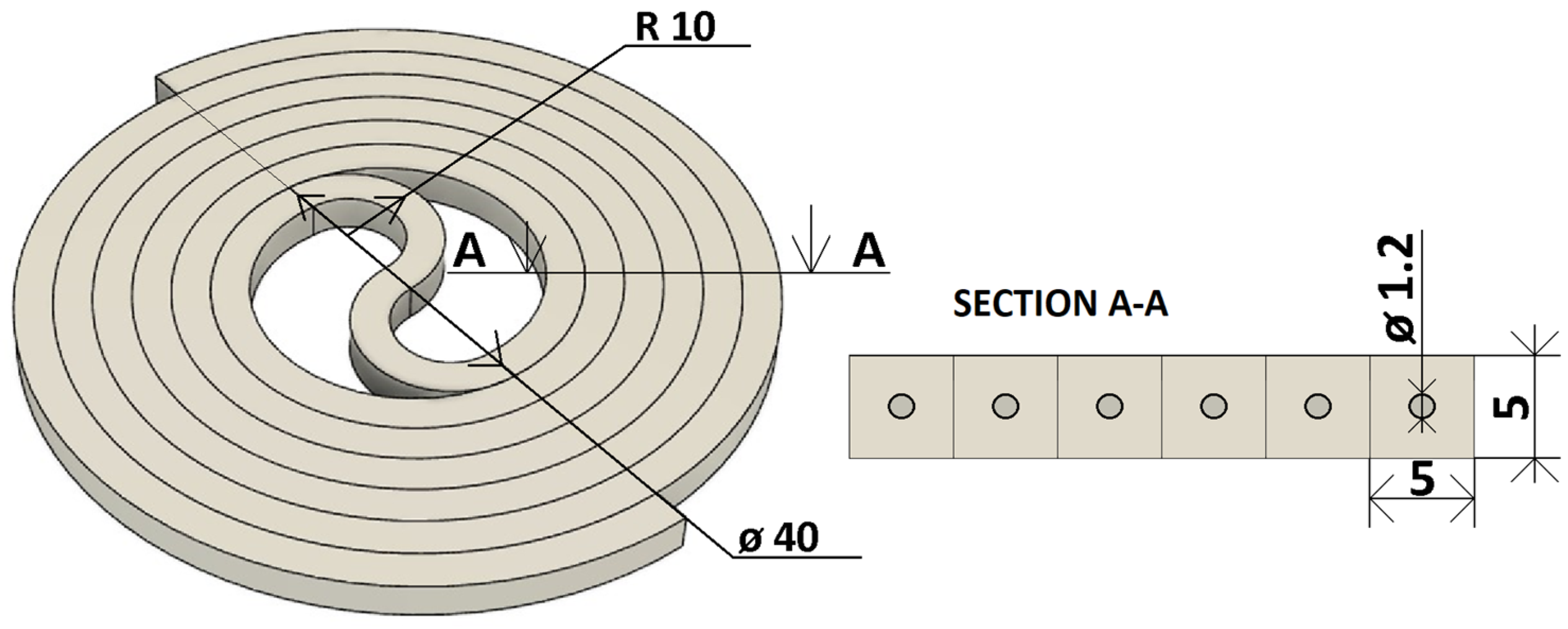




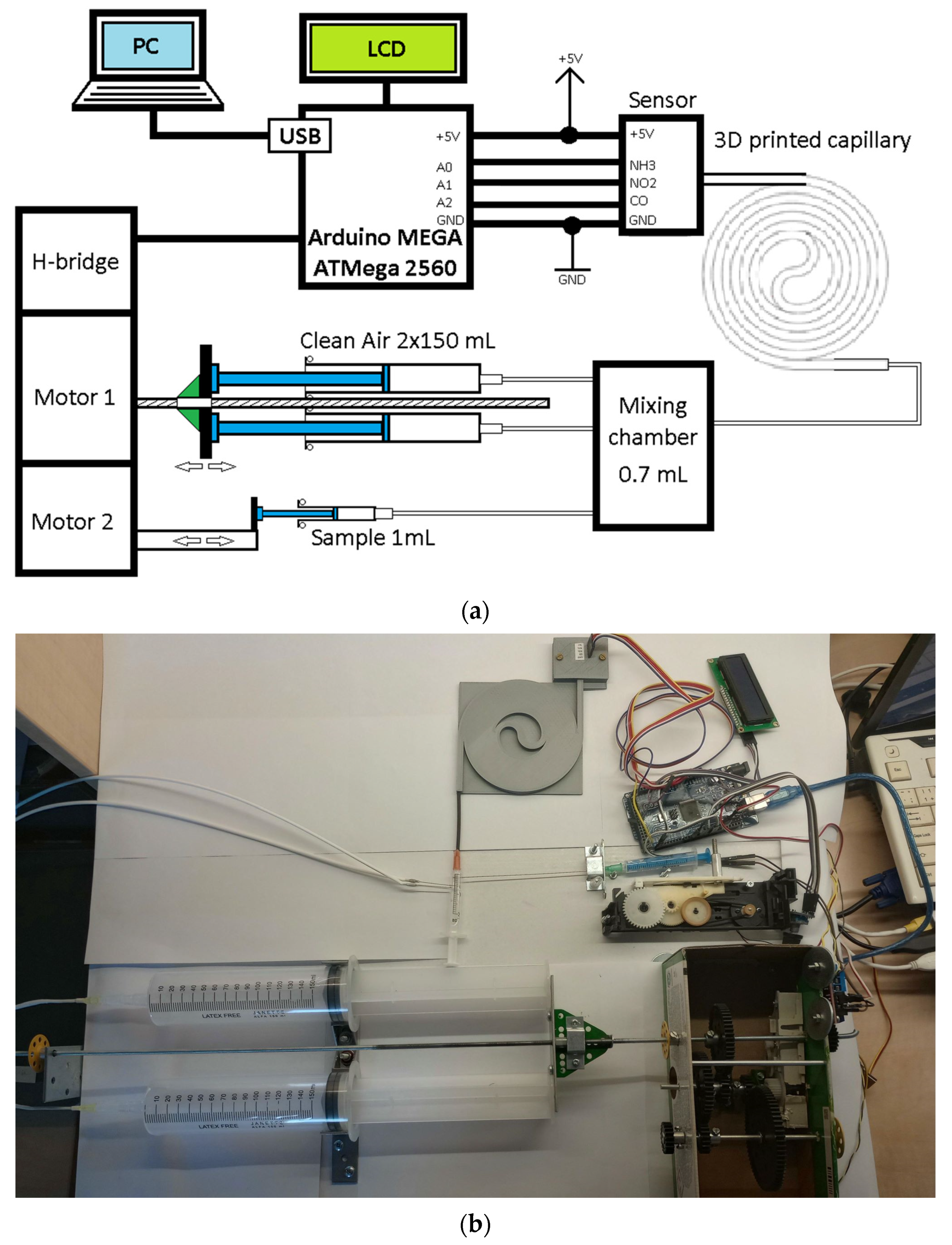
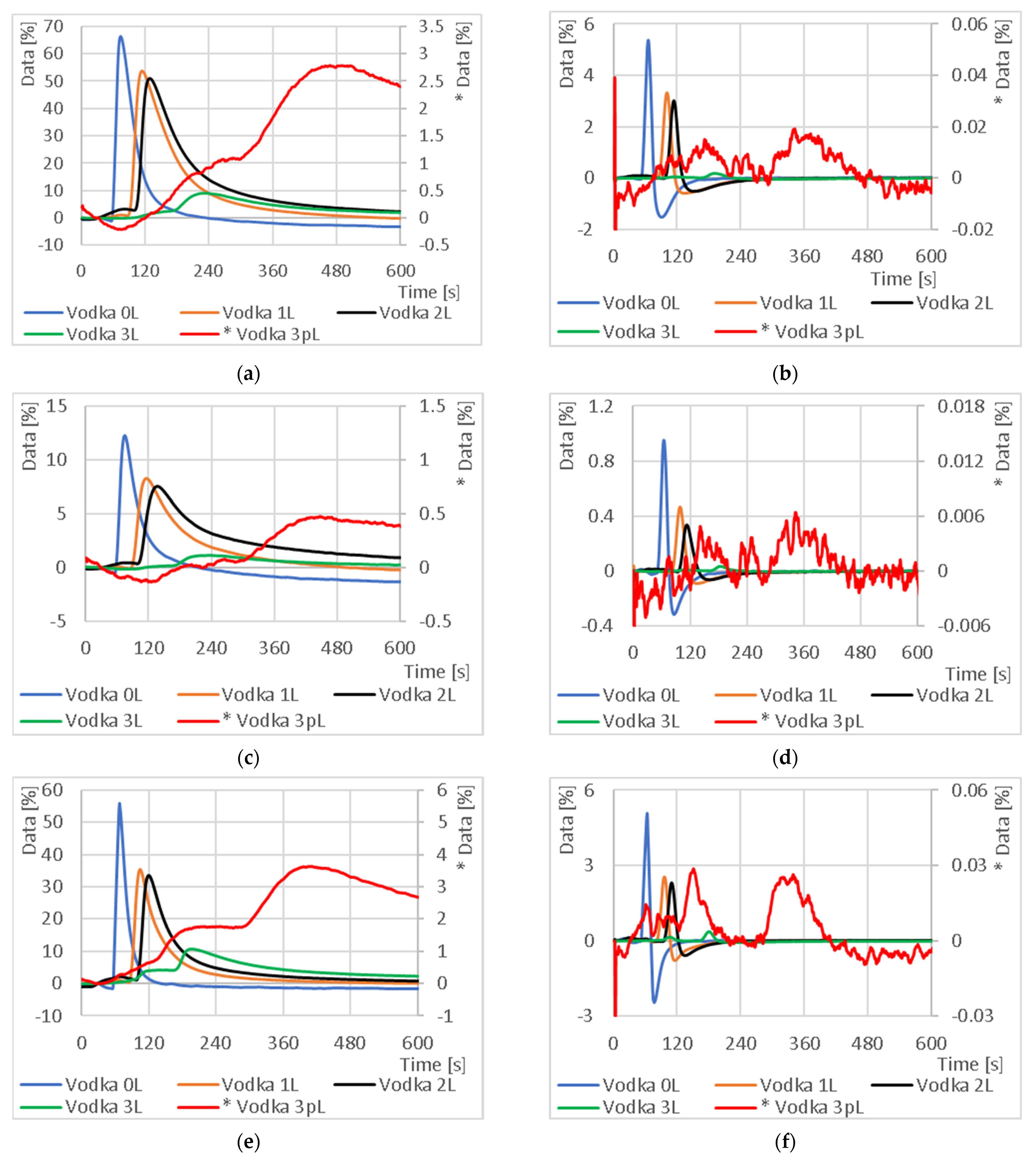

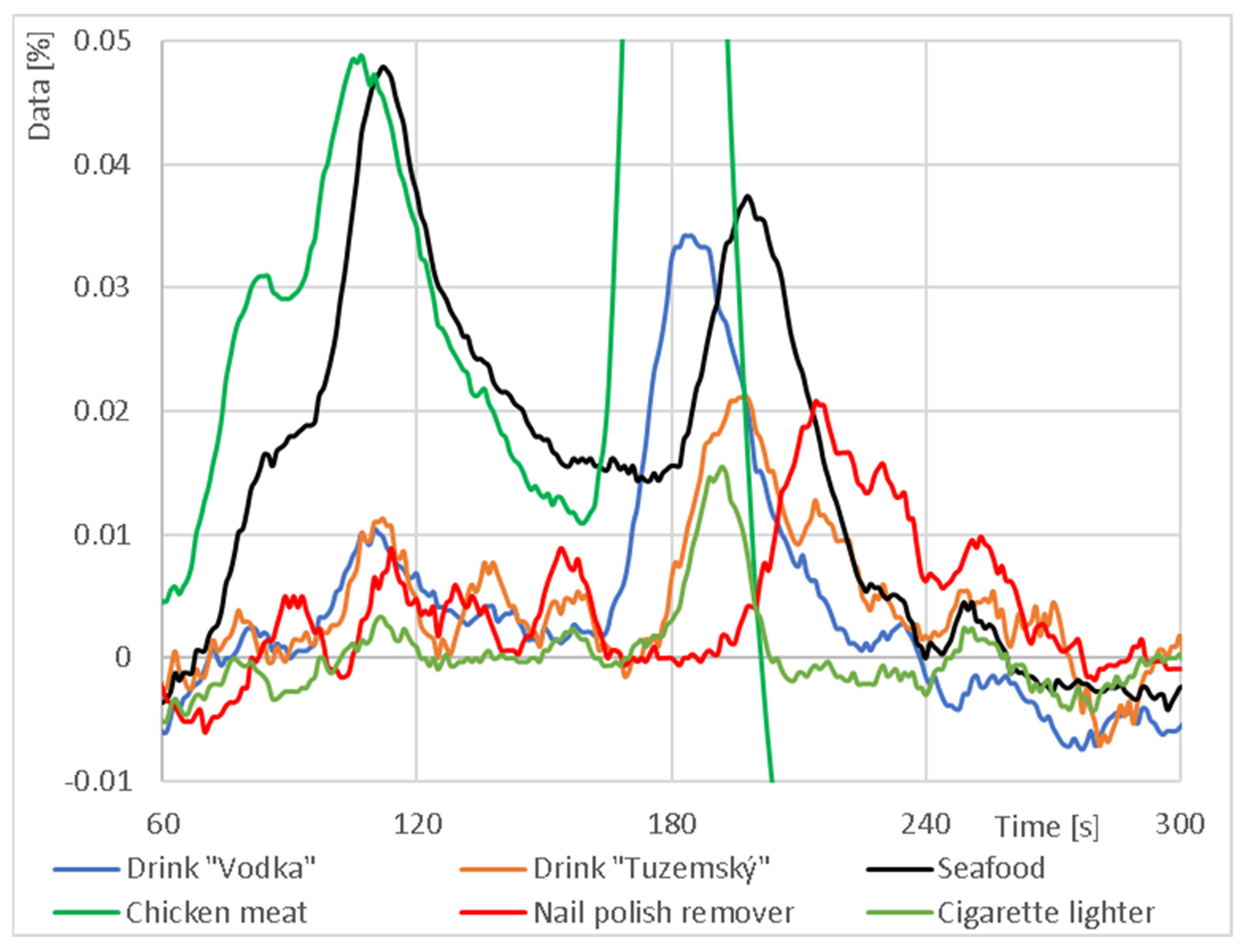

| Capillary Tier Number | Tube Lenght [mm] | Tube Volume [mL] | Weight [g] | Inner Surface [cm2] |
|---|---|---|---|---|
| 1 | 1489 | 1.68 | 58 | 56.16 |
| 2 | 3112 | 3.52 | 120 | 117.34 |
| 3 | 4692 | 5.31 | 170 | 176.96 |
Disclaimer/Publisher’s Note: The statements, opinions and data contained in all publications are solely those of the individual author(s) and contributor(s) and not of MDPI and/or the editor(s). MDPI and/or the editor(s) disclaim responsibility for any injury to people or property resulting from any ideas, methods, instructions or products referred to in the content. |
© 2023 by the authors. Licensee MDPI, Basel, Switzerland. This article is an open access article distributed under the terms and conditions of the Creative Commons Attribution (CC BY) license (https://creativecommons.org/licenses/by/4.0/).
Share and Cite
Adamek, M.; Mlcek, J.; Skowronkova, N.; Zvonkova, M.; Jasso, M.; Adamkova, A.; Skacel, J.; Buresova, I.; Sebestikova, R.; Cernekova, M.; et al. 3D Printed Fused Deposition Modeling (FDM) Capillaries for Chemiresistive Gas Sensors. Sensors 2023, 23, 6817. https://doi.org/10.3390/s23156817
Adamek M, Mlcek J, Skowronkova N, Zvonkova M, Jasso M, Adamkova A, Skacel J, Buresova I, Sebestikova R, Cernekova M, et al. 3D Printed Fused Deposition Modeling (FDM) Capillaries for Chemiresistive Gas Sensors. Sensors. 2023; 23(15):6817. https://doi.org/10.3390/s23156817
Chicago/Turabian StyleAdamek, Martin, Jiri Mlcek, Nela Skowronkova, Magdalena Zvonkova, Miroslav Jasso, Anna Adamkova, Josef Skacel, Iva Buresova, Romana Sebestikova, Martina Cernekova, and et al. 2023. "3D Printed Fused Deposition Modeling (FDM) Capillaries for Chemiresistive Gas Sensors" Sensors 23, no. 15: 6817. https://doi.org/10.3390/s23156817
APA StyleAdamek, M., Mlcek, J., Skowronkova, N., Zvonkova, M., Jasso, M., Adamkova, A., Skacel, J., Buresova, I., Sebestikova, R., Cernekova, M., & Buckova, M. (2023). 3D Printed Fused Deposition Modeling (FDM) Capillaries for Chemiresistive Gas Sensors. Sensors, 23(15), 6817. https://doi.org/10.3390/s23156817






